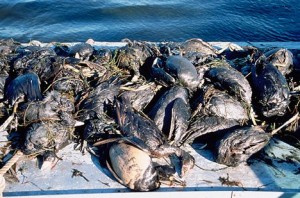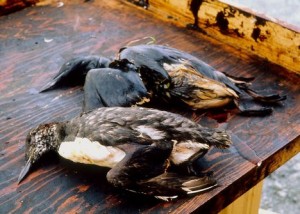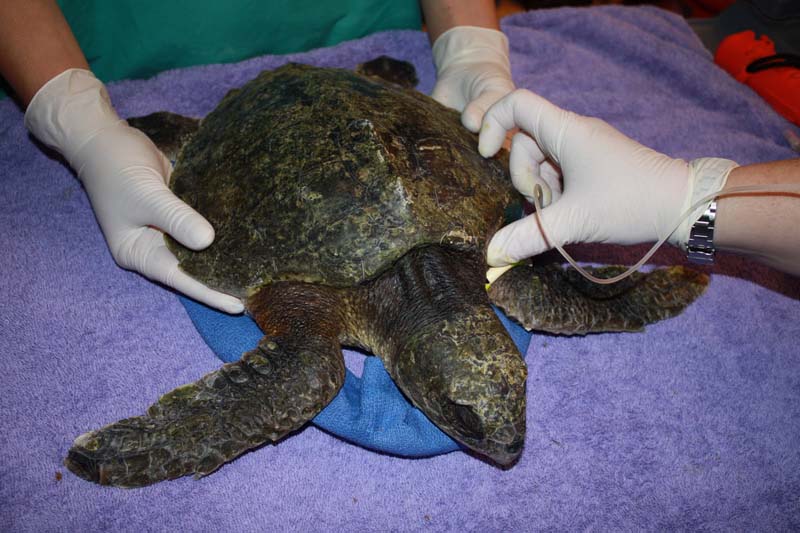GULF OIL SPILL AFFECTS WILDLIFE
Posted in Wildlife A-Z | June 29, 2010 | 1 CommentThe entire world was shocked when it happened. Just happening wasn’t enough, it continued, and continued some more. When the Deepwater Horizon explosion happened on the 20th of April, 2010; little did anyone know that this  would turn out to be the worst spill in the whole of American history. 2 days later, the rig began sinking and on the 27 of April, the verdict was out – nearly 5,000 barrels per day were leaking into the Gulf, and polluting the water all around.
would turn out to be the worst spill in the whole of American history. 2 days later, the rig began sinking and on the 27 of April, the verdict was out – nearly 5,000 barrels per day were leaking into the Gulf, and polluting the water all around.
The Gulf Oil Spill Affects Wildlife
For those who live along the coastline of Mexico, images of the Gulf Oil debacle will never leave their minds. Pelicans that struggle to get the oil off  their bodies, the dead bodies of dolphins that get washed ashore with every new wave, bodies of fish that are coated in sludge – making them unrecognizable; these are images that are going to haunt them for the rest of their lives.
their bodies, the dead bodies of dolphins that get washed ashore with every new wave, bodies of fish that are coated in sludge – making them unrecognizable; these are images that are going to haunt them for the rest of their lives.
Over 8 weeks may have passed since the unfortunate incident, but things are only beginning to look worse now. The amount of marine life and animal life that has been adversely affected is tremendous. All the damage done is irreversible, which makes the poor picture even more grim.
Wildlife rescue operations in progress
It’s not like everyone who is anyone can randomly go and start saving the animal life that has been affected by the great big oil spill. It requires training for the volunteers, because untrained personnel might actually do more bad than good. There is another issue with the whole concept of volunteering to help the animal life that’s being affected by the sludge – it may, consequently, have effects on your health as well.
The rescue operation steps
When professionals, who have been trained in rescue operations respond to such a calamity, they have to do so in a step-by-step manner.
- Collect both live and dead wildlife that has been affected by the oil.
- Conduct an intricate physical examination of the animals.
- Feed, hydrate and rest the animals for a period of around 48 hours.
- Wash them in a series of tubs, using cleaning agents that have been diluted and warm water that has been softened.
- Place the animals in an appropriate housing option, until the sea is fit for them again (outdoor pools).
- The animals must be banded or tagged before they are released into their natural habitat.
- A post-release assessment will include monitoring the animals through radio devices that were tagged onto them.
In the case of smaller marine organisms, the likes of shellfish; the rescue operators will create barriers between the slick and the animals (a technology called ‘booms’).
Casi Callaway, the executive director of Mobile Baykeeper, which is an Alabama based organization that is conducting rescue operations in the area, was quoted by Discovery news. “A chemical dispersant used by BP has broken up the oil and caused it to break up and sink. Fish and other organisms then think it’s food and eat it, leading to long-term problems in the ecosystem as the toxins move through the food chain.”
There are a number of other organizations that are involved in the cleaning process as well. Callaway hopes that things start falling into place soon, and that they’re able to get the required number of volunteers and the right kind of authority to be able to make a plausible difference to the already-dying wildlife of the region.







 Save to delicious
Save to delicious Stumble it
Stumble it
This is one of the biggest environmental disaster of our times..Recklessness on our part has led to a grievous loss of marine life..Its so hard to remove oil from the coastal areas??
Why aren’t they using bioremediation solutions that have been PROVEN to remove oil with no damage to plants or animals. I don’t think anyone wants to hear about the SOLUTIONS to the catastrophic event.